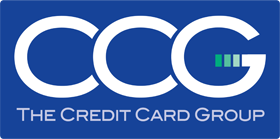As of Sunday, January 27, 2013, merchants can for the first time elect to pass along the cost of processing a credit card transaction to the cardholder in the form a surcharge on the purchase price. This is a result of a recent class-action lawsuit settlement involving the major card brands (Visa and MasterCard).
If you’re a retailer, finally being able to recoup those processing costs probably sounds attractive. That’s the “good” … but there’s more to the story. As a merchant, you need to address a number of issues before you elect to surcharge your customers for their purchases in your store.
First, and most significant, does your state even allow you to surcharge for a transaction? Ten states currently prohibit surcharging, regardless of the settlement: California, Colorado, Connecticut, Florida, Kansas, Maine, Massachusetts, New York, Oklahoma and Texas. Simply put, if you have a store in one of these states, you can’t tack a surcharge onto a transaction.
There has been chatter in Washington, DC, about a federal ban on surcharging, but so far that is just talk.
The next issue you must address within your store is identifying which cards you can surcharge if you’re inclined to add a fee. You are still prohibited from applying a surcharge to pre-paid cards and debit cards (signature or PIN). That’s not always as easy as it sounds.
The challenge is that these cards are sometimes difficult to identify from looking at the face of the card. Most Point-of-Sale systems aren’t able to tell from the card swipe if it is a pre-paid or debit card, so you have to train your staff to identify those types of cards and treat them differently. Obviously, this creates an opportunity for error and for consumer confusion at the point of checkout. In addition, if you elect to surcharge a consumer for the purchase, any return must include the surcharge.
If, after considering these points, surcharging is still something you would like to do, you must register with each of the card brands and give 30 days notice to your customers. Each of the card brands has slightly different rules and procedures that you will need to review.
Assuming that you run that gauntlet successfully, you need to establish the amount of the surcharge (it can’t exceed 4 percent or the amount of the discount rate from the merchant processor) and provide proper notification to the consumer before the transaction is processed.
And now the ugly … Notification must be at the POS and also on the receipts that the consumer signs. The amount of the surcharge must be a separate amount on the receipt that your credit card terminal prints. If you are using a countertop unit from any of the major manufacturers, none of them (to my knowledge) has programming as of right now that would allow you to enter the amount of the transaction that is the surcharge.
Even uglier is the possibility that your customers will object to your surcharge and end up walking out and never coming back. In this highly competitive industry, there are bound to be retailers who advertise they don’t impose surcharges.
So, although surcharging might sound good, you’ll need to think through all the bad and ugly details before jumping into it. You also have an alternative. As has been the case for many years, cash discounts are allowed under your merchant contract and are not regulated under this settlement.
More information on surcharging can be found at the following websites:
Visa.com/merchantsurcharging
Mastercardmerchant.com.
John Mayleben CPP is Retailers Processing Network senior vice president, technology and product development, and a national expert on electronic payment processing. He was the first person in Michigan and among the first in the nation to receive the Certified Payments Professional designation from the Electronic Transactions Association.
